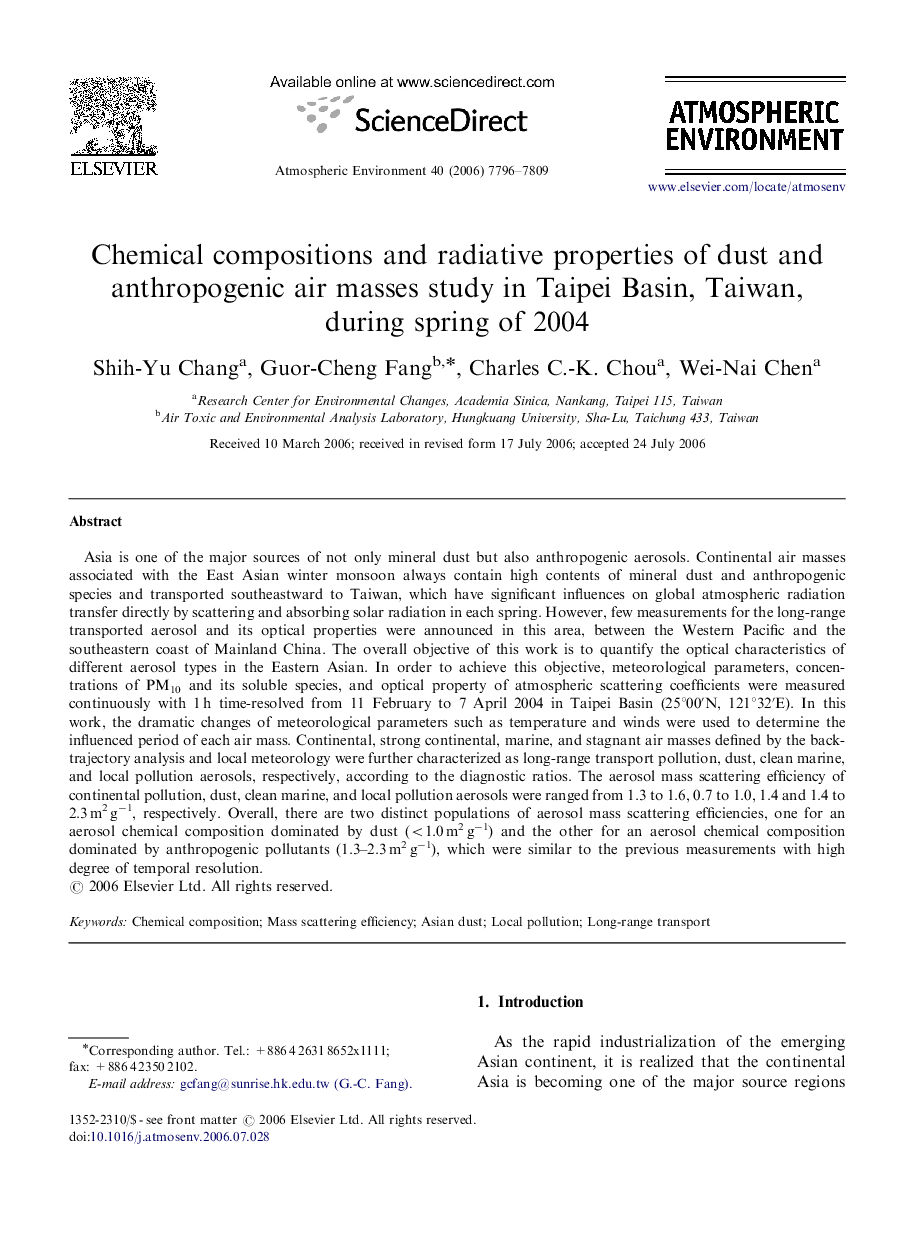| کد مقاله | کد نشریه | سال انتشار | مقاله انگلیسی | نسخه تمام متن |
|---|---|---|---|---|
| 4444454 | 1645549 | 2006 | 14 صفحه PDF | دانلود رایگان |

Asia is one of the major sources of not only mineral dust but also anthropogenic aerosols. Continental air masses associated with the East Asian winter monsoon always contain high contents of mineral dust and anthropogenic species and transported southeastward to Taiwan, which have significant influences on global atmospheric radiation transfer directly by scattering and absorbing solar radiation in each spring. However, few measurements for the long-range transported aerosol and its optical properties were announced in this area, between the Western Pacific and the southeastern coast of Mainland China. The overall objective of this work is to quantify the optical characteristics of different aerosol types in the Eastern Asian. In order to achieve this objective, meteorological parameters, concentrations of PM10 and its soluble species, and optical property of atmospheric scattering coefficients were measured continuously with 1 h time-resolved from 11 February to 7 April 2004 in Taipei Basin (25°00′N, 121°32′E). In this work, the dramatic changes of meteorological parameters such as temperature and winds were used to determine the influenced period of each air mass. Continental, strong continental, marine, and stagnant air masses defined by the back-trajectory analysis and local meteorology were further characterized as long-range transport pollution, dust, clean marine, and local pollution aerosols, respectively, according to the diagnostic ratios. The aerosol mass scattering efficiency of continental pollution, dust, clean marine, and local pollution aerosols were ranged from 1.3 to 1.6, 0.7 to 1.0, 1.4 and 1.4 to 2.3 m2 g−1, respectively. Overall, there are two distinct populations of aerosol mass scattering efficiencies, one for an aerosol chemical composition dominated by dust (<1.0 m2 g−1) and the other for an aerosol chemical composition dominated by anthropogenic pollutants (1.3–2.3 m2 g−1), which were similar to the previous measurements with high degree of temporal resolution.
Journal: Atmospheric Environment - Volume 40, Issue 40, December 2006, Pages 7796–7809